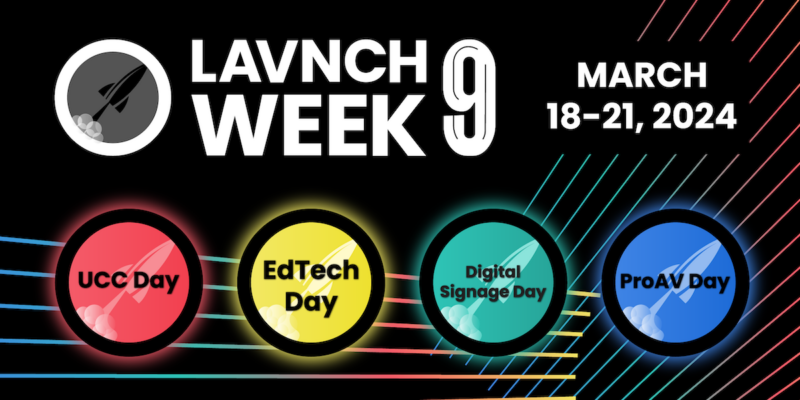Are the HomeAV and ProAV Markets on a Collision Course?

Years and years ago, the ProAV market dominated the AV space and community. Products would debut at commercial AV shows like NAVA, InfoComm, NSCA and even broadcast AV shows like NAB and eventually trickle on down to the HomeAV world.
That all changed in the late ‘90s. Some says it was the DVD player; others, believe it or not, say it was S-video (I don’t buy that one) and even more say it was the leadership role the HomeAV market took with HDMI. But whatever it was, for at least a decade now, the HomeAV space has been in the driver’s seat.
Now, that doesn’t mean that HomeAV hasn’t driven over some potholes along the way. Remember the LaserDisc? Phast? And, likewise, the ProAV industry has tried and tried to take a leadership role with new technologies like network-enabled gear, sophisticated and dumbed-down control systems and even digital signal distribution (i.e., DVI and SDI).
What’s clear now is that, technologically, HomeAV is leading ProAV. It seemed to start with the DVD player; then came TiVo (or the digital video recorder), and widescreen and HDTV adoption rates (seven to eight years before the government forced the issue upon us). Now HomeAV has even stolen the network-enabled thunder, with more than 45 percent of AV technology installed in homes today being connected to the “network” — compared to less than 10 percent in the ProAV market.
But, technology isn’t always where it’s at. Look at Apple. They, by all accounts, seem to have a technological lead in just about every product category they have including smart phones, laptop features and performance, OS performance and this little-known AppleTV (Netflix-in-a-box) $199 music, movie and photo server that’s connected to the Internet all the time.
But, they are not the sales leaders in most of those product categories. The best technology isn’t always the leading in sales. Heck, Microsoft’s market share is so big, many people are saying our kids may not even see the day where that flips.
Now, let’s drill down into the HomeAV market versus the ProAV Market. Although many of the new technologies being integrated into commercial AV spaces today have been around for years in the HomeAV space, the ProAV market is still doing better than the HomeAV market in economic terms. There’s a virtual meltdown occurring in the HomeAV space. Some say it’s good for the industry as it will weed out the bad custom integrators and “long live the good ones,” but it’s definitely scary. ProAV integrators are now, almost universally, reporting an up-tick in business, while HomeAV integrators are still stalled.
But, there’s a trend out there we see happening that’s helping some CI’s cope. Over the past six months, more and more CI’s are becoming InfoComm or NSCA members and are starting to design and install small ProAV projects. It used to be you’d have to go through some sort of lengthy AMX or Crestron certification or training class to be able to do control systems in the ProAV space, but now more and more of the control system companies from the Home world are heading into the ProAV space – case in point, Universal Remote Controls (URC) has a big presence at InfoComm with what they call, “a new product line with a focus on the commercial AV market.” And, look at Extron’s MediaLink – is there a simpler control system than that?
Now, I am not going to kid you into thinking that this is a good idea or that this will be an easy sell. In fact, ProAV integration, although easier in the sense that you don’t have to deal with the WAF, or Wife Acceptance Factor (yep, I said it), you do have many clients where the training department, the AV folks and the accounting people want three different things in the same room.
I think that most HomeAV integrators who attempt this crossover will fail. But, some are well positioned and with the economy where it is, this may be a way to diversify safely. The ones who have managed large turnkey projects both technically and financially will do fine in the ProAV space. But, here are some things you’ve got to do, too:
• Become a member of InfoComm (www.infocomm.org) and get at least your basic CTS certification. AVAD recently said they were adding ProAV to their repertoire but aren’t even InfoComm or NSCA members – nor have they ever exhibited at those shows.
• Go to InfoComm next week in Orlando – seriously. Look up the show: www.infocommshow.org. This is the CEDIA of the ProAV market.
• Make sure you can handle these projects financially – the average lead-time from design to install can easily stretch to 12 and sometimes even 24 weeks – any project longer than that – stay away!
• Educate, Educate, Educate: That show I just mentioned above has over 200 educational classes all about the ProAV integration market. Don’t just try and jump in without at least getting educated on the process, the people and the potential pitfalls on ProAV integration.





